X
This article was co-authored by Maggie Moran and by wikiHow staff writer, Amy Bobinger. Maggie Moran is a Professional Gardener in Pennsylvania.
There are 8 references cited in this article, which can be found at the bottom of the page.
This article has been viewed 73,461 times.
Hyacinths are a beautiful spring flower with an intoxicating fragrance. However, the flowers tend to be top-heavy, which can cause the narrow stem to snap. Whether your hyacinths are planted in your garden or arranged in a vase, it's easy to keep them from flopping over.
Steps
Method 1
Method 1 of 3:
Growing Strong Hyacinths
-
1Choose a location with good light to plant your bulbs. Hyacinths need about 5 hours of light each day in order for the stems to grow strong. In weak light, the stems will be thin and the blooms will easily snap the stalk.[1]
-
2Plant hyacinth bulbs 4 inches (10 cm) deep. If the bulbs aren't planted deep enough, the plant's stem won't have enough strength to support the weight of the flowers when the hyacinth blooms. A depth of about 4 inches (10 cm) will help ensure the hyacinth grows strong.[2]
- Grape hyacinths should be planted 2–3 inches (5.1–7.6 cm) deep.
Advertisement -
3Maintain a temperature of around 46–65 °F (8–18 °C). Plants with bulbs tend to flower in cooler temperatures, so you shouldn't let your hyacinths get above 65 °F (18 °C). Keep the temperature steady, as fluctuations can increase the risk of root rot.[3]
-
4Keep the soil moist but not overly wet. Hyacinths need a lot of water, but too much moisture will cause the bulb to rot. Keep your hyacinth strong by keeping it in well-drained, moist soil.[4]
-
5Rotate your hyacinth regularly if it's in a pot. Your hyacinth will naturally grow towards the sun. This can cause it to bend, making it more susceptible to snapping. If it's in a planter, turning it every few days will help it to grow straight.[5]
Advertisement
Method 2
Method 2 of 3:
Supporting Hyacinths
-
1Cut a stake so it's the height of your plant, plus 4 inches (10 cm). Since hyacinths are a top-heavy flower, they have a tendency to flop over even if they are grown under ideal conditions. They often need some kind of support, such as being tied to a stake.[6]
-
2Tie the stakes to the stems if your hyacinths start to droop. Place your stake about 1 inch (2.5 cm) the stalk of your hyacinth, inserting it into the ground about 4 inches (10 cm). Attach the plant to the stake with twine.[7]
- To secure the plant, tie the plant to the stake with 3 pieces of twine: one at the top of the plant, one in the middle, and one at the bottom.
-
3Use a forked stake for more support. If you like, you can use a forked stake or twig from a nearby tree to support the bloom on your hyacinth. Nestle the flower into the fork, then tie the stem of the hyacinth to the stake.[8]
-
4Push wire through the flower and down into the bulb for invisible support. Most hyacinths are discarded after they flower, so it won't matter if the wire damages the bulb. Use a sturdy floral wire, available at any garden store.[9]
Advertisement
Method 3
Method 3 of 3:
Cutting Your Hyacinths
-
1Cut or dig up your hyacinth blooms early in the morning. Plants are most hydrated in the morning, since they've gotten moisture from the night air and the morning dew. This hydration fills the stems with water and makes your plants stand up straighter.[10]
-
2Leave your hyacinth on the bulb if you choose. Some people prefer to leave their hyacinths attached to the bulb. In this case, dig up your hyacinth, rinse it under cold water, and place the entire plant into a vase.[11]
-
3Cut the stem 1 inch (2.5 cm) above the ground if you don't want the bulb. This should leave enough stem to support the weight of the flower. Use garden shears to cut your flowers, as kitchen shears will crush the flower's vascular system and prevent water uptake. This will cause your flower to droop.
-
4Place your cut flowers in a bucket of water immediately. If air gets into the stem, it will prevent your flower from being able to take in water from the vase. Submerging your flower stems in water immediately after cutting the stems will help prevent this.[12]
-
5Insert a pin into the stem just below the bloom if your flower is still drooping. The sticky substance inside of a hyacinth can prevent water uptake. If you insert a small pin about 1 inch (2.5 cm) below the bloom, it will help the flower siphon water through the stem, causing it to perk back up.
Advertisement
Expert Q&A
-
QuestionDoes hyacinth rebloom?
 Maggie MoranMaggie Moran is a Professional Gardener in Pennsylvania.
Maggie MoranMaggie Moran is a Professional Gardener in Pennsylvania.
Home & Garden Specialist Yes, to do this remove the bloom fully. Place the plant inside in a sunny location. Water frequently and add plant food. Once the foliage is yellow, remove it. Plant hyacinth in the shadiest part of the yard. Place fertilizer and bone meal in the hole and place the bulbs face down in the hole. Cover them with soil and water frequently.
Yes, to do this remove the bloom fully. Place the plant inside in a sunny location. Water frequently and add plant food. Once the foliage is yellow, remove it. Plant hyacinth in the shadiest part of the yard. Place fertilizer and bone meal in the hole and place the bulbs face down in the hole. Cover them with soil and water frequently. -
QuestionHow many years will hyacinths bloom?
 Maggie MoranMaggie Moran is a Professional Gardener in Pennsylvania.
Maggie MoranMaggie Moran is a Professional Gardener in Pennsylvania.
Home & Garden Specialist If you transplant from a pot to the outdoors, they will bloom yearly. In a pot, they will bloom for 2-3 weeks.
If you transplant from a pot to the outdoors, they will bloom yearly. In a pot, they will bloom for 2-3 weeks. -
QuestionDo hyacinth bulbs multiply?
 Maggie MoranMaggie Moran is a Professional Gardener in Pennsylvania.
Maggie MoranMaggie Moran is a Professional Gardener in Pennsylvania.
Home & Garden Specialist A variety of hyacinth, called the grape hyacinth, multiplies its bulbs underground. To avoid this you can dig up the bulbs or spray them with vinegar.
A variety of hyacinth, called the grape hyacinth, multiplies its bulbs underground. To avoid this you can dig up the bulbs or spray them with vinegar.
Advertisement
Things You'll Need
- Hyacinth bulbs
- Garden soil
- Stakes
- Twine
Warnings
- Wear gloves if you'll be handling hyacinth bulbs for an extended period of time, since they contain a chemical which can irritate bare skin.[13]⧼thumbs_response⧽
Advertisement
References
- ↑ https://www.rhs.org.uk/advice/profile?PID=614
- ↑ https://www.almanac.com/plant/hyacinths
- ↑ http://www.guide-to-houseplants.com/hyacinth-flower.html
- ↑ https://www.rhs.org.uk/advice/profile?PID=614
- ↑ https://www.sciencedaily.com/releases/2013/05/130528105946.htm
- ↑ https://www.bhg.com/gardening/flowers/perennials/staking-and-training-perennials/
- ↑ https://www.bhg.com/gardening/flowers/perennials/staking-and-training-perennials/
- ↑ https://www.bhg.com/gardening/flowers/perennials/staking-and-training-perennials/
- ↑ https://www.express.co.uk/life-style/garden/755648/How-to-grow-hyacinths
About This Article
Advertisement
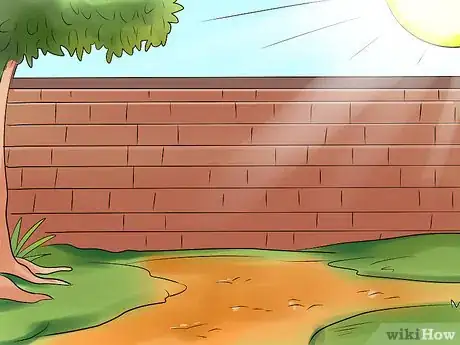
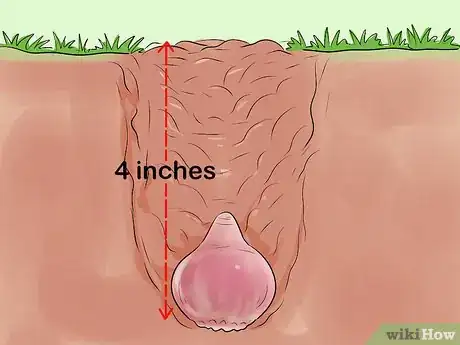
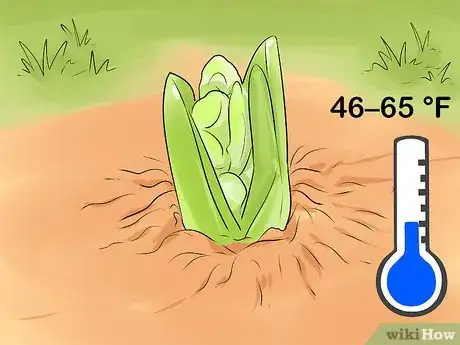
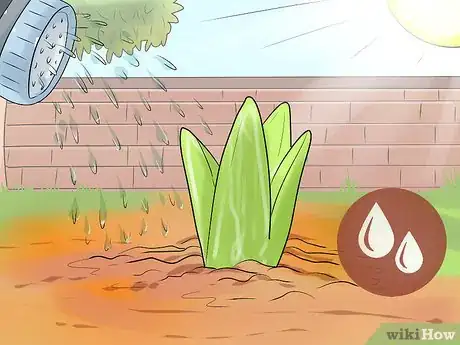
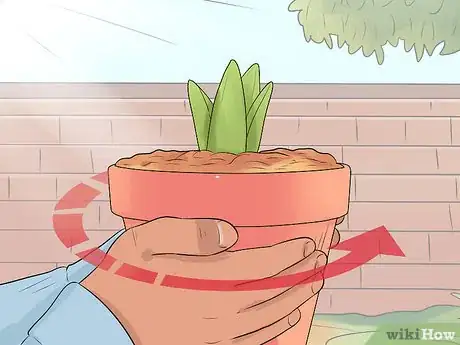
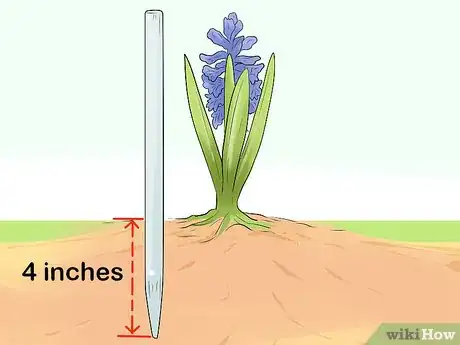
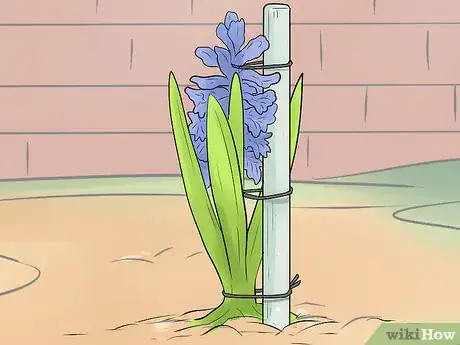
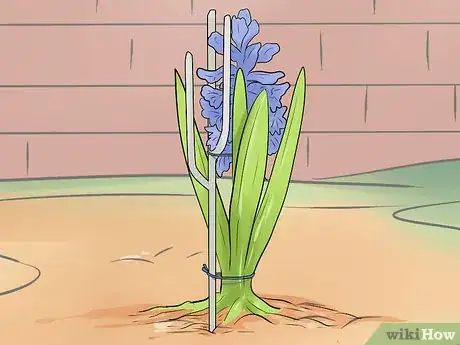
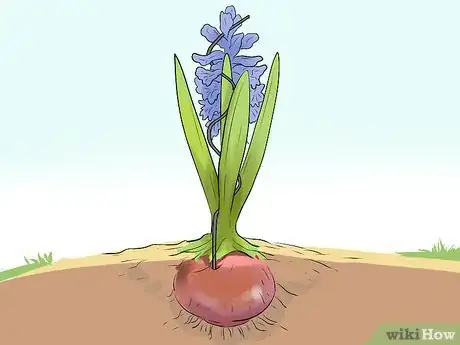
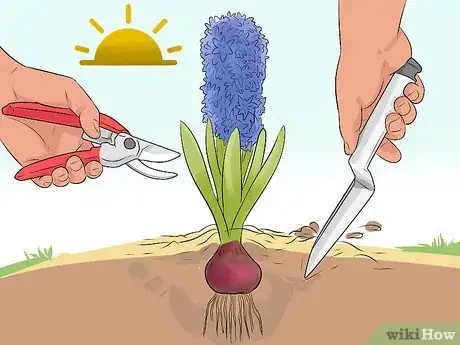
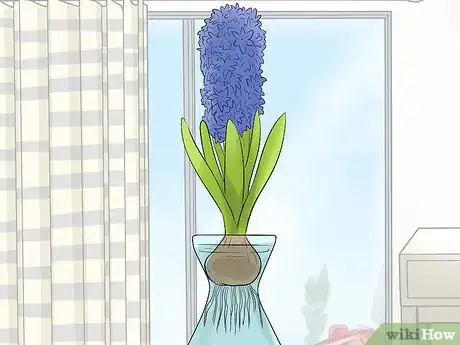
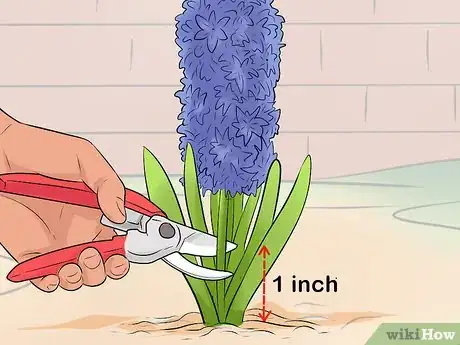
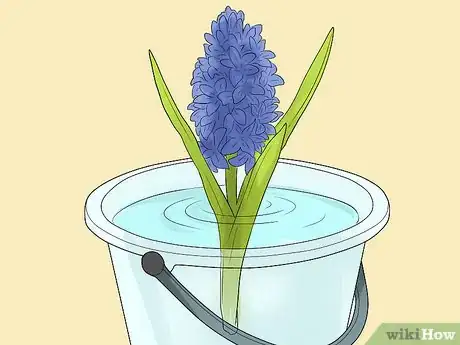
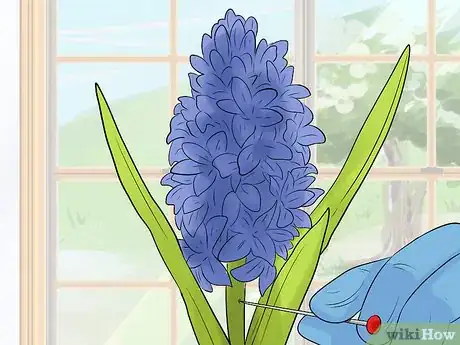
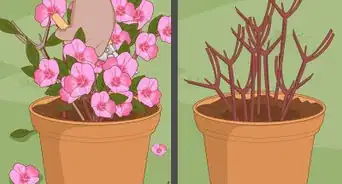


-Step-8.webp)




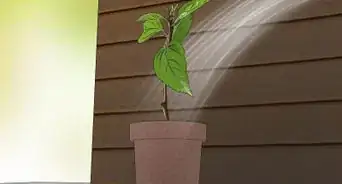












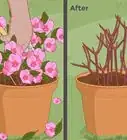


-Step-8.webp)


































